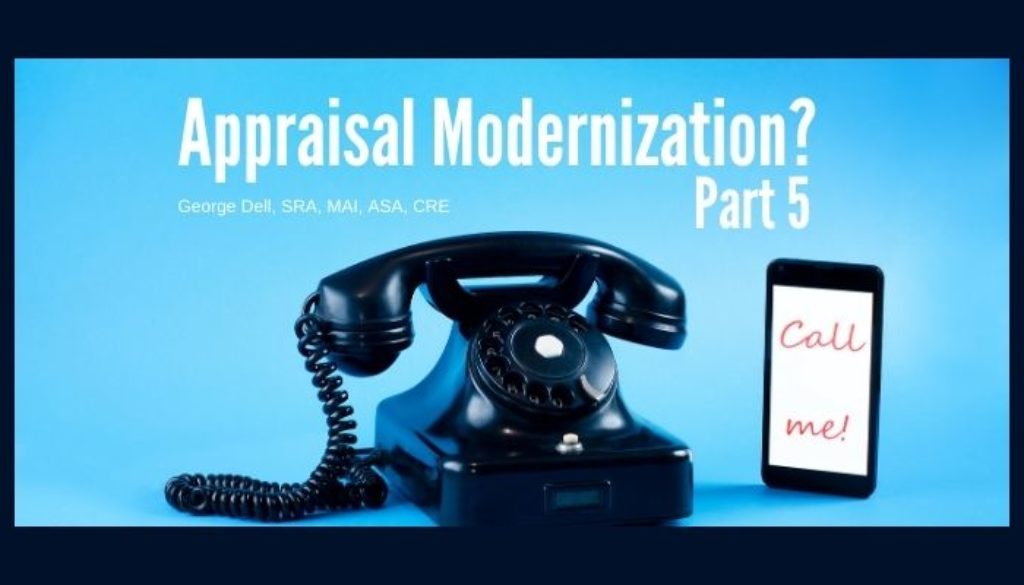What is “Appraisal modernization”?
(This is part 5 in an ongoing series on Appraisal Modernization. Part 1 starts here.)
The Federal Housing Finance Agency (FHFA) is seeking input to “create a more streamlined and accurate collateral valuation process.” It also wisely recognizes that new regulations “could have negative unintended consequences.” Said director Mark Calabria. While the request specifies four areas, it also notes that an intent is to help improve FHFA’s understanding of Enterprises involved, particularly with regard to unintended or inappropriate levels of risk. This includes “both loan quality and the origination process.”
It pleases me in particular that there is attention not only in traditional appraisal, but also in the broader valuation industry, data inputs, and potentials for bias. The stated focus is on:
- The appraisal process;
- Data inputs and forms structure;
- AVMs and waivers of appraisals; and
- Valuation differences “by borrower and neighborhood ethnic makeup.”
This Analogue Blog continues our uninterrupted four-year focus on these issues. To set the stage, we will use this week’s blog to outline some key issues and directions for more detail of solutions.
Appraisal is “an opinion of value” as defined (and controlled in effect) by the Appraisal Foundation (AF), through the Uniform Standards of Professional Appraisal Practice (USPAP) then enforced through 54 state/territorial jurisdictions. The traditional “valuation process” is laid out in The Appraisal of Real Estate, published by the Appraisal Institute, the largest real property professional organization.
Valuation may or may not be performed by an appraiser (again, as defined by the AF). These include ‘Evaluations’, AVMs, BPOs, assessors, and others. Non-appraiser valuations are not typically required to conform to USPAP.
Modernization requires attention to ‘big data’ challenges and opportunities. The answer to big data is data science. Data Science comprises statistics, computation, and field-related expertise.
Evidence-Based Appraisal (EBA)© exploits ‘big data’ potential with data science practices. EBA delivers analytic results, and can be optionally followed by an appraiser opinion. In my opinion, appraisal modernization must integrate AVM-like algorithms with trained analyst judgment.
The Uniform Appraisal Dataset (UAD) was motivated by: 1) the perception of better ‘consistency and accuracy’ of property ratings across the country and across property types; 2) the ability to automate the administrative ‘review’ of appraisals.
Automated Valuation Models (AVMs) are not really just a model. AVMs are really an industry using a variety of proprietary and secret models. Current study by the AVM Standards committee of the Industry Advisory Council (IAC), reveals that even tests of reliability such as Forecast Standard Deviation (FSD) or confidence scores are also ‘black box’ calculations without consistency throughout the industry.
Appraisal waivers relate to the reliability of the data input (mostly inspection level). This affects the reliability/risk portion of the collateral decision. Evidence Based Valuation (EBV)© explicitly enables risk/reliability scoring of individual appraisals, (as well as compliant ‘AVM’ products).
Valuation differences by borrower or ethnic makeup is a bias issue. Bias is of different varieties and impacts. It can be personal/psychological, or analytic, or even of historical legacy in nature.
We will continue to examine each of these issues, particularly the importance of modern computer competence, data decision, and graphical grasping of market meaning.
